Atlanta Fed Chief Pledges to Oppose Hike Inverting Yield Curve
This article by Steve Matthews for Bloomberg may be of interest to subscribers. Here is a section:
Investors see a 90 percent probability of a rate hike at the Fed’s meeting next month and around a 60 percent chance of a fourth move when officials gather in December, according to prices in interest-rate futures markets. As the view that the Fed will keep raising rates has grown, the yield curve has flattened, with short-term yields rising more than long-term ones.
Bostic, together with several other regional Fed chiefs including St. Louis’s James Bullard, Robert Kaplan in Dallas and Minneapolis’s Neel Kashkari, have used this year’s flattening curve to argue that the central bank should tread warily in raising rates all that much further to avoid an inversion.
History is on their side: Over the past 50 years, the U.S. has always tumbled into recession within a year or two of the curve flipping.
“There are many, many signals in the economy and we have to pay attention to all of them,’’ Bostic said. “This yield curve will be one.’’
The big question facing central bankers as they retreat from extraordinary monetary stimulus is whether the next recession will be a recuperative measure which would help unwind excesses or whether it would represent the dawn of another credit crisis?
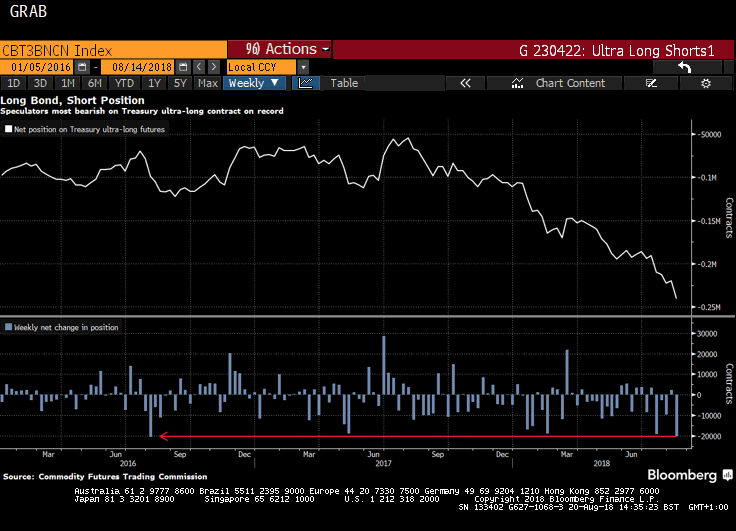
On this occasion consumers are less leveraged, even though car loans do represent a potential point of stress. Meanwhile corporations have taken on a great deal of debt and that trend persists. That appetite for debt has been one of the primary mechanisms through which monetary accommodation has flowed through to the stock market so when it eventually ends that will represent a headwind.
.png)
The yield curve spread slipped to a new low today and remains on a downward trajectory.
The pace of contraction could pick up if the Fed persists in raising rates and the historically large short position in 10-year Treasuries is unwound. With so much stress in various overseas markets at present there has been a lot of demand for Treasuries which has held yields below 3% in addition to the fact that inflationary pressures remain contained.
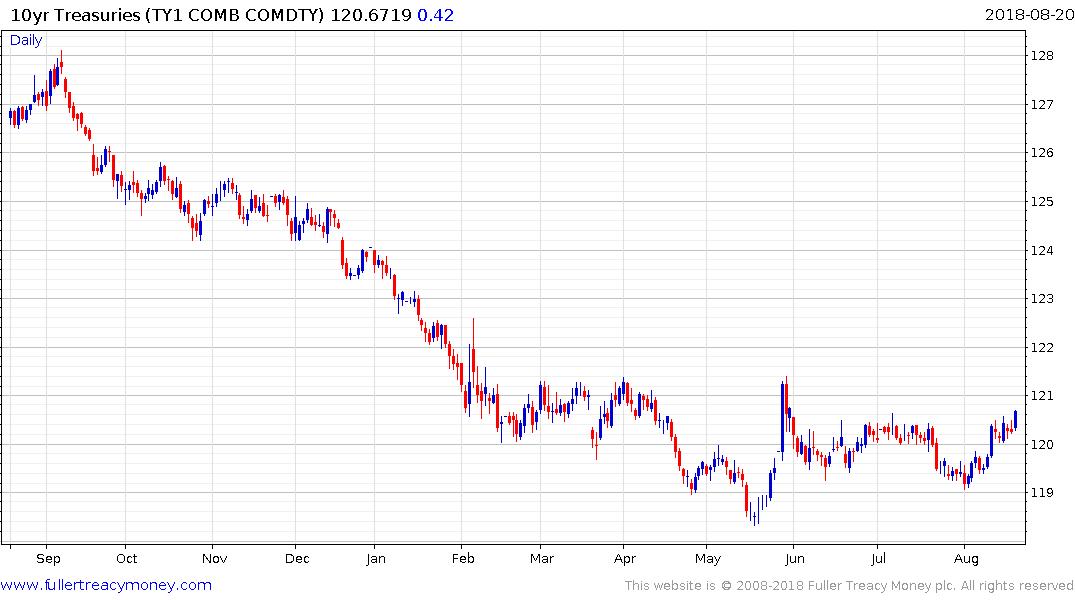
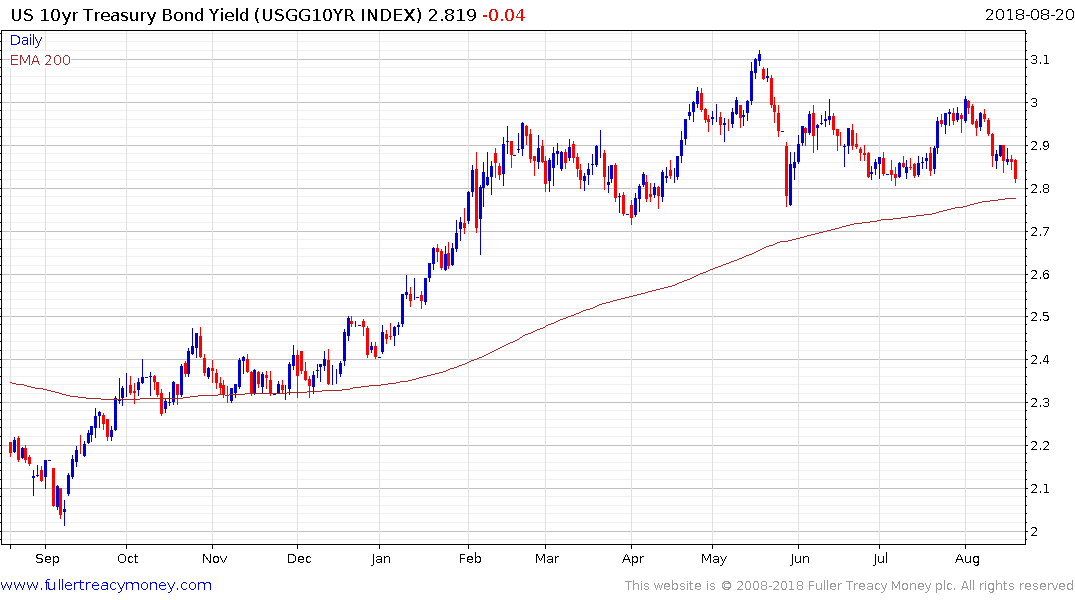
The 10-year futures price has been ranging below 121 since February and a break above that level would signal a return to demand dominance beyond the short term. If that puts pressure on the very large short position currently outstanding then it is not beyond the bounds of possibilities the price will rally back towards 122.5 and that is a conservative figure.
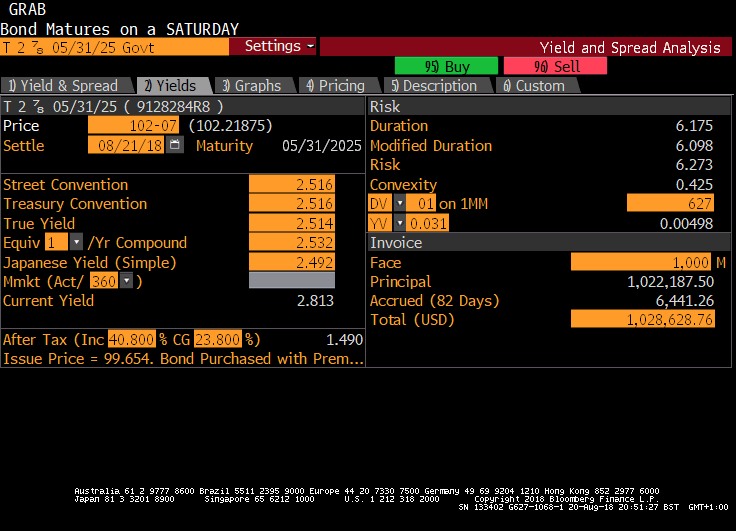
The cheapest to deliver bond at present is the 2.875% 2025 Treasury which is currently trading at 100-21/32 or 2.768%. Let’s for arguments sake opine that the price rises the equivalent of 2.5 basis points. That would result in a 2.51% yield.
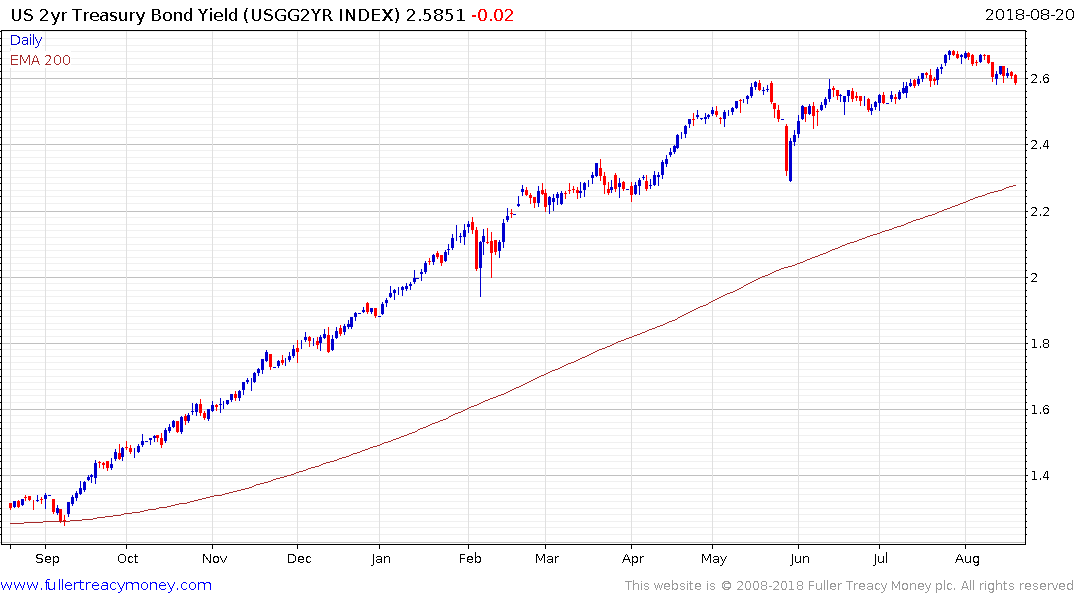
The 2-year yield is currently also contracting but is right now sitting at 2.58%. That suggests there is substantial scope for an uptick in volatility over the coming weeks in the event the short position in Treasuries is even partially unwound.


